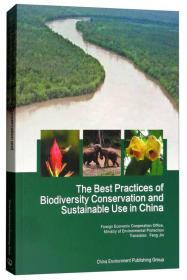
THE HISTORICAL STATUS OF CHINA S TIBET(中国西藏的历史地位)
¥ 6.44 2.0折 ¥ 32 八五品
库存5件
作者尼玛坚 赞 著;王家伟
出版社五洲传播出版社
出版时间2000-12
版次2
装帧平装
上书时间2024-09-09
- 最新上架
商品详情
- 品相描述:八五品
图书标准信息
- 作者 尼玛坚 赞 著;王家伟
- 出版社 五洲传播出版社
- 出版时间 2000-12
- 版次 2
- ISBN 9787801133045
- 定价 32.00元
- 装帧 平装
- 开本 其他
- 纸张 胶版纸
- 页数 333页
- 【内容简介】
-
In recent years,more and more foreing personnel are showing a concern about Tibet.In order to meet their needs,we have compiled this book based on the academic monorgraph Comments on the Historical Status of Tibet published in 1995 by the Nationalities Press.
Comments on the Historical Staqtus of Tibet expounds upon the close relations between the region fo Tibet and ancient China making use of rich and accurate historical materials,especially those showing that Tiber has been a part of Chinese territory since the Yuan Dynasty (1271-1368).It forcefully denies the entire ideological system of "Tibetan independence"and,for the first time,systematically answers the theories put forward by the Dalai clique.The Chinese edition of this work has attracted great attention in China and was granted the 1996 Excellent Book Award in China. - 【目录】
-
Introduction
ChapterⅠ Relations Between the Han and the Tietans During the Tang and Song Dynasties
ChapterⅡ Relations Between the Emperor of the Yuan Dynasty and the Prince of Dharma of the Sagya Sect of Tibetan Buddhism
(1)Godan and Sapan
(2)Kublai and Pagba
ChapterⅢ Ming Dynasty's Policy of Enfieffment and Tribute-Related Trade
ChapterⅣ The Sovereign-Subject Relationship Between the Qing Dynasty Emperor and the Dalai Lama
(1)Emperors Shunzhi and Kangxi With the 5th Dalai Lama
(2)Emperors Kangxi,Yongzhen and Qianlong With the 6th and 7th Dalai Lamas
(3)Emperors Qianlong,Jiaqi8ng ,Daoguang and Tongzhi With the 8th-12th Dalai Lamas
(4)Emperors Guangxu and Xuantong With the 13th Dalai Lama
ChapterⅤ British Invasion and the Birth of the Myth of "Tibetan Independence"
(1)First British Invasion
(2)Second British Invasion
(3)British Move to Cultivate Pro-British Froces in Tibet
ChapterⅥ Tibet Is Not an Indeperdent Political Entity During the Period of the Republic of China
(1)Yuan Shi-kai and the 13th Dalai Lama
(2)The Bandurpt "Simla Conference"and the Invalid Convertion
(3)The Tibetan Army's First Eastward Invasion
(4)Around the Gansu Delegation's Entry Tnto Tibet
(5)The 13th Dalai Lama Awakens
(6)Gongjor Zhongnyi and the Tibet Office in Nanjing
(7)The Tibetan Army's Second Eastward Invasion
(8)The Demise of the 13th Dalai Lama and Huang Musong's Entry Into Tibet
……
ChapterⅦ The Founding of the People's Republic of China and the Peacdeful Liberation of Tibet
ChapterⅧ Armed Rebellion in Tibet Opposed the Democratic Reform Through Which Serfs Win Human Rigts
ChapterⅨ Tibetan People Acquired Ultimate Human Righst Through Quelling of Rebellion and Conducting the Democratic Reform
ChapterⅩ Tibet Institutes Regional National Autonormy and Needs No "Self-Determination"
ChapterⅪ The 14th Dalai-Lllegal"Government-in-Exlie"Is a Destabillizing Factor for Asia
ChapterⅫ Achievements in Construction and Development
Concluding Remarks
Postscript
相关推荐
-

WORLD HISTORI THE HUMAN EXPERIENCE NATIONAL GEOGRAPHIC SOCIETY世界历史,英文原版精装大16开,重约近3公斤
九品上海
¥ 1288.00
-

BIRDS EYE VIEWS Histori Lithographs of North American Cities 鸟眼观历史版画的北美城市
九品南京
¥ 689.00
-

Egypte 埃及 De Carchemis oppidi situ et historiâ antiquissimâ 论 Carchemis oppidi 现场与古代历史 fgant jq100jwy
九品
¥ 2450.00
-

1971年 《柏辽慈的幻想交响曲:权威乐谱、历史背景、分析、观点与评论》,平装,Berlioz' Fantastic Symphony: An Authoritative Score: Histori
九品北京
¥ 159.00
-

1740年 HISTORIÆ CONGREGATIONUM 超大开本 白犊皮精装 41x28.5CM,厚7cm,夹有精美签名赠言,书重3.1KG
八品天津
¥ 7799.00
-

The
全新保定
¥ 20.20
-

The
全新保定
¥ 33.70
-

The
全新北京
¥ 18.81
-

The
全新北京
¥ 17.34
-

The
全新北京
¥ 42.66
— 没有更多了 —












以下为对购买帮助不大的评价